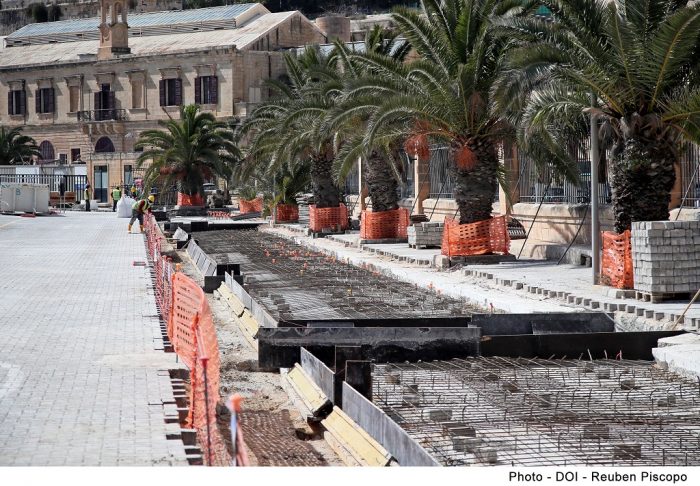As the first phase of the Grand Harbour Clean Air Project is well underway, Minister for Transport, Infrastructure and Capital Projects Ian Borg and Parliamentary Secretary for European Funds Stefan Zrinzo Azzopardi announced that underground electricity cables which will distribute electricity from Enemalta’s primary substation to the docks of the Grand Harbour, Marsa and Senglea have been laid. In all, more than 8 kilometres of network have already been put in place.
Minister Ian Borg said, “Through this €50 million investment, we will be improving air quality for 17,000 families living in the Grand Harbour area by reducing more than 90% of the air pollution caused by these ships. Studies conducted indicate that through this investment, within 20 years, Malta will save up to €375 million in costs related to the consequences that may arise from air pollution such as health impacts, natural environment, infrastructure and agriculture. Hence, through these health and environmental benefits, this project will be one of the biggest contributors to improved air quality in Malta. This is our holistic vision, that in favour of a better quality of life for all Maltese and Gozitans. This is a government that is environmentally friendly, in favour of a greener lung and sustainability.”
Minister Ian Borg went on to thank Infrastructure Malta for their hard and continuous work, which is changing the infrastructure of our country and creating a progressive and cleaner Malta.
The first branch of this network, which is nearing completion, will connect Enemalta’s existing substation with the Deep Water Quay, where Infrastructure Malta will build one of the two frequency converter stations. The second stretch of cables is directed towards Bridge Wharf and Church Wharf in Marsa. From here, submarine cables will extend the network to Coal Wharf in Corradino and subsequently to Boiler Wharf, in Senglea.
Parliamentary Secretary for European Funds Stefan Zrinzo Azzopardi explained how the Grand Harbour Clean Air project is being funded with €21.9 million in European funds from the Connecting Europe Facility. He said that this project will not only help to achieve Malta’s environmental goals, but it complements the European Union’s policy on climate change and the environment.
Parliamentary Secretary Zrinzo Azzopardi stated that “Thanks to this project, the people living in these areas will enjoy a drastic reduction in emissions. I look forward to the implementation of similar projects in other parts of Malta including the south of Malta.”
At each quay, Infrastructure Malta is building quayside stations to house switchgear and shore-to-ship connection panels. The first of these small buildings is under construction at Pinto Wharf.
This month, coring works to embed will begin on eight-storey concrete piles beneath the Deep Water Quay in Marsa which will support the first frequency converter station. The second one is expected to be installed in an old industrial shed in Boiler Wharf, Senglea. Infrastructure Malta will restore and conserve this shed as part of Malta’s industrial heritage.

Photos (DOI/MTIP)


![Grand Harbour Clean Air Project [4-3-21]](http://livenewsmalta.com/wp-content/uploads/2021/03/pr210477d-696x499.jpg)







